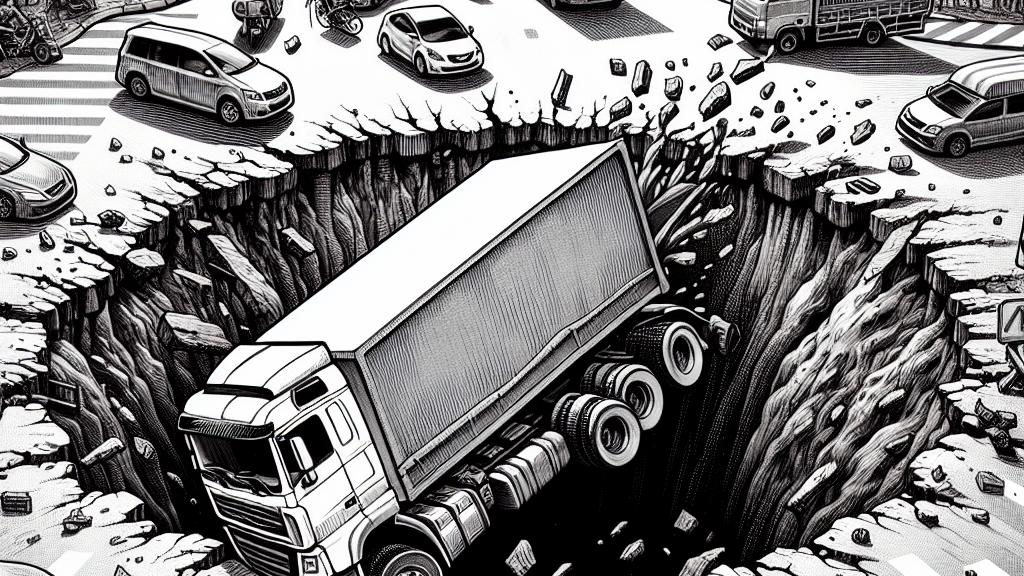Rescue Efforts Underway After Truck Falls Into 10-Meter Deep Hole in Yashio City
Overview
- A truck has plunged into a 10-meter deep hole that unexpectedly opened up due to a road collapse in Yashio City, Saitama.
- Local emergency services rapidly mobilized to perform a daring rescue of the trapped driver, showcasing their bravery and quick response.
- This incident starkly illustrates the critical need for effective infrastructure maintenance to ensure public safety.

The Incident
On January 28, 2025, at approximately 9:50 AM, the calm of Yashio City, Saitama, was suddenly disrupted when a terrifying scene unfolded. Without warning, a massive hole roughly 10 meters deep and 5 meters wide appeared at a busy intersection, swallowing a truck in its wake. Just imagine the panic of the driver as the ground crumbled beneath them—one moment navigating the road and the next, plummeting into darkness. This shocking event not only posed a grave risk to the driver but also triggered a significant disruption in traffic, causing chaos during rush hour.
The Rescue Operation
In an immediate response, local firefighters and police didn't waste a second—they jumped into action, demonstrating remarkable teamwork and bravery. Picture the scene: emergency crews, with sirens blaring and lights flashing, quickly surrounded the site of the accident. With careful coordination, they set about extricating the trapped driver, a crucial and high-stakes endeavor. Traffic was redirected, and safe zones established for bystanders, ensuring the area remained secure. Their quick thinking, skill, and determination truly reflect the unwavering commitment that first responders have to their communities; they are, without a doubt, everyday heroes.
Implications for Infrastructure
This frightening incident serves as a wake-up call to all of us about the state of our infrastructure. It raises an essential question: how many roads across Japan are at risk of similar failures? Consider this; if a major highway were to collapse in a busy city, the consequences could be catastrophic. Regular inspections and timely repairs should never be viewed as optional; they are essential for public safety. We must advocate for stringent maintenance protocols, innovative engineering solutions, and community awareness programs to prevent such events from recurring. If we want to safeguard our lives and the lives of others, prioritizing infrastructure must become a top priority.

Loading...